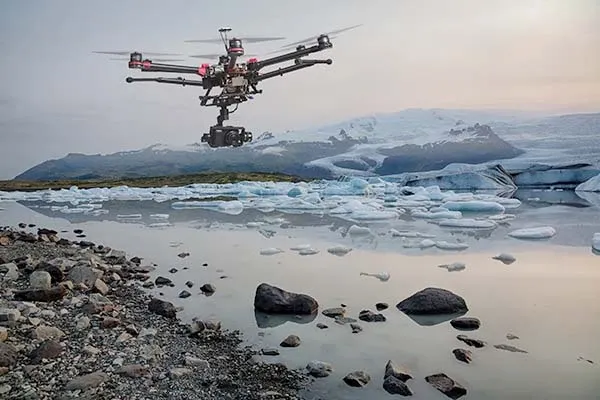Siemens Opens Its Largest Global Research Hub
Siemens has opened the first building complex of its Technology Center (STC) at Garching Research Campus, north of Munich, Germany.

The world's largest commercial conference on drones, Interdrone 2016 was held at Paris in Las Vegas, September 7 to 9 this year. The second edition of this conference attracted 155 exhibitors and over 3,500 visitors from 54 countries to get to know the last achievements in the field of unmanned systems, sensors and associated equipment.
The conference was divided into three thematic sections, Drone Techcon-for manufacturers and developers, Drone Enterprise-for service providers and large customers, and Drone Cinema-for all those who are engaged in aerial photography. We had the opportunity to learn firsthand what Amazon, Intel, Yuneec, DJI and 3DR plan for the future. 39 new products were announced at the conference and one could see first-hand a large number of special glasses that allow the direct transfer of images from drones, and therefore easier management. Interestingly, more and more well-known manufacturers enter that segment. Some of the more renowned that offered devices of this type are Carl Zeiss-Cinemizer OLED, Brother-Airscouter, Vufine-LCOS, and already quite popular Glyph by the company Avegant as well as inevitable models by the company Fat Shark. For the first time at the fair, there was the Japanese drone manufacturer Prodrone that at this year's fair presented the biggest aircraft with robotic arms. It is interesting that Japan that has been using the unmanned systems for 30-odd years, and only now has a stronger presence in the market.
We can conclude on the basis of their presentation that it is only a matter of time before their aircraft will arrive to our market. And they are really fascinating - one of the drones is able to autonomously carry out an inspection of the facility so that it actually slides horizontally and vertically on the walls.
A significant part of topics was about the regulatory framework since the long-awaited Regulation 107 of the Federal Aviation Administration of the United States (FAA) was released a week before the conference. The leaders of this organization used this opportunity to clarify their strategy regarding the further development of the industry of unmanned aircraft and methods of application of the regulation. The biggest criticism was that the flight when the aircraft is outside the field of visibility (BVLOS) is still not regulated, which is essential for commercial scenarios.
The fair exhibited plethora of cameras of new and hitherto unknown manufacturers so we were pleasantly surprised with products from Kodak that presented a great new 360 SP360 camera that comes in a pair and allows recordings in which the final product shows no visible parts of drones and combined with PixPro 4K Desktop and Pixpro 360 Stitch applications allows that with only one flight of a drone different shooting angles are seen in the final product. Beside them, there were manufacturers of special cameras FLIR, MAPIR, Slantrange, Leddar Tech, Parrot, MicaSense and a whole range of smaller special cameras.
There was a premiere of Yuneec Breeze4K drone that with its price and capabilities opens up completely new ways of use as a personal flying camera. One could see there SenseFly (or Parrot), a new model by the company eBee, which is primarily intended for use in precision agriculture, and one of the "new" players, the company Intel that sees in drones a big market for the placement of their products. At this year's conference, they presented Aero development platform that includes a platform for flying (computer), a development drone and Real Sense vision kit with which they want to attract developers to their platform. With an investment of $60 million in the company Yuneec, Intel has shown that the drone industry is important for their future.
The use of drones for precision agriculture took a large portion in the lecture where the farmers and experts shared their experiences and know-how in the application of drones. Similar in Croatia and the United States is the situation in agriculture, regardless of the size of farm land in the United States, where the average age of farmers is 50+ years. In both cases, young people leave rural areas for cities, and there is actually no one left to work the fields. Here lies the opportunity for a variety of new unmanned systems where autonomous tractors, various sensors and aircraft are tested that could compensate for the lack of manpower. There were also questions whether it was correct that John Deere enters the drone market, but the answer to that was a brief "yes, it would be logical".
Without doubt, Interdrone becomes an important place for the exchange of ideas and information related to the development of unmanned systems, and if you deal or plan to deal with them, be sure and plan to attend the next conference which will take place September 18 to 20, 2017 at the hotel Rio, Las Vegas.